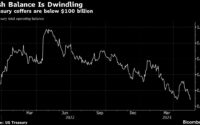Short-term oil price forecasts have been persistently bullish this year, with most forecasters expecting benchmarks to top $100 sometime next year. Over the longer term, however, things change. Goldman Sachs, for instance, this week said in a note that it expected oil could surge to $125 per barrel if China ended its Covid restrictions. Its base-case forecast for 2023 is for Brent at $110 per barrel, but stronger demand from China if and when restrictions end could push the price even higher.
Separately, Morgan Stanley forecast that emerging markets are in for a rebound next year, citing China’s pro-growth policy, the peaking of the U.S. dollar as the ultimate international currency, and the ongoing shift in international trade relations.
A rebounding emerging world would mean more oil demand because it is developing countries that are the biggest growth engines for the oil market, led by China and, at the top spot, India.
Over the longer term, things appear to change, however, at least according to Fitch Solutions. The company said in a report shared exclusively with Rigzone that it expected oil prices to fall from $102 this year to $95 in 2023 and further to $85 in 2026.
The reason for this expectation that oil will decline in price over the next three years is the macroeconomic context that has been flashing recession warnings for months in many parts of the world. In that expectation, Fitch is far from alone. A lot of analysts expect a recession, although not all of them agree on the direction oil prices are going to take as a result of these economic trends.
Related: Oil Prices Fall On Easing Geopolitical Tensions
It was because of recession concern that OPEC itself cut its forecast for oil demand, while earlier this year, it was growing at a healthy pace despite the price rally. Not in the latest Monthly Oil Market Report, however. In it, OPEC said that the economic factors affecting oil prices were skewed to the downside and revised demand growth predictions by 100,000 bpd.
Just how strong the influence of recession expectations is on oil prices can be seen on an almost daily basis: media reports on oil prices note fears of recession as a reason for any price drop during any trading session more frequently than any other factors.
These fears tend to be countered by optimism about China, also on an almost daily basis. Meanwhile, forecasts about the looming recession keep coming, especially for Europe.
“Consumer confidence has plunged so badly that the recession will likely not be shallow,” the chief economist of Berenberg, Holger Schmieding, told CNBC in the context of the economic outlook for the European Union.
The euro-area economy’s growth is seen contracting from 0.8 percent in the second quarter to 0.2 percent in the third quarter. It’s still a positive number, but economists appear to have their doubts about next year when the EU will face the challenge of refilling their gas storage facilities—but this time without the flow of Russian oil it received during the first half of this year.
A recession is a surefire way to depress oil prices, as Reuters’ John Kemp noted in a column earlier this month. In it, he said that despite many economists in official positions dancing around the word recession without actually using it, the slowdown had already begun in the United States. It is also evident in the European Union.
The question from now on, then, is just how much more those economies will slow down. The more they slow down, the greater the demand destruction in oil would be and, consequently, the greater the effect on international prices.
By Charles Kennedy for Oilprice.com
More Top Reads From Oilprice.com:


